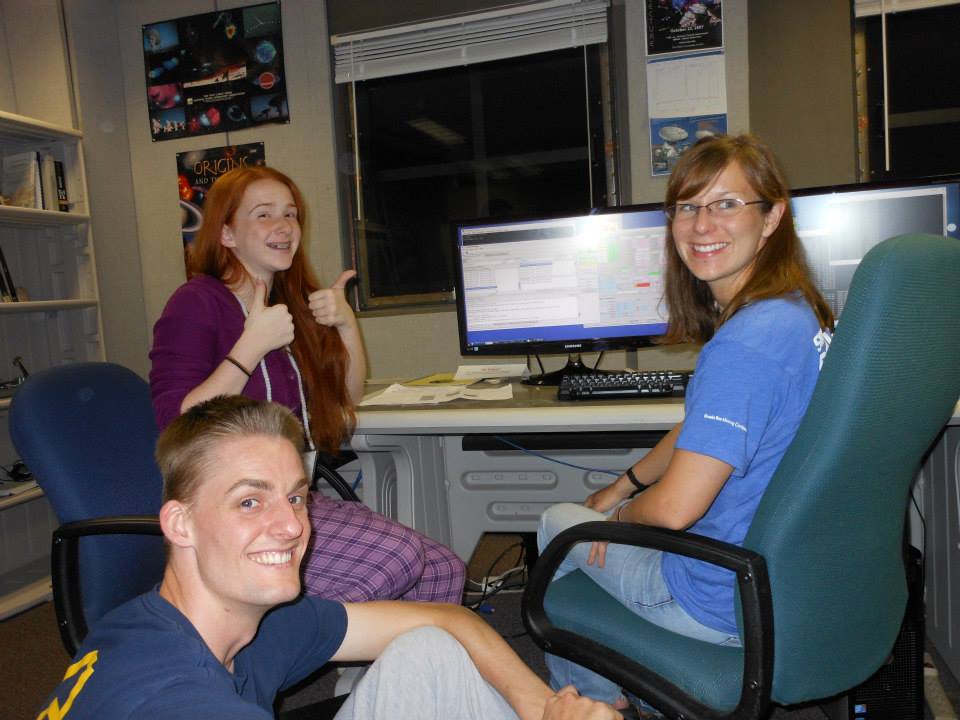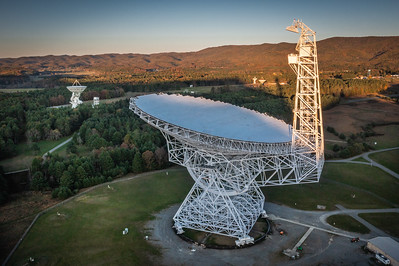About Us
- Details
- Published on Wednesday, 24 March 2010 14:26
Our Mission: To discover new pulsars
Imagine... After millions of years of nuclear fusion, a massive star depletes its core of hydrogen and helium. With no outward pressure to hold it up, gravity wins, and the star collapses. The outer layers rebound from the core and are expelled into space in a giant supernova explosion. But, what of the core?? It continues to collapse into a neutron star... an object with the mass of our Sun, yet only 20 kilometers in diameter.
Some neutron stars--those we can detect--are called pulsars. Pulsars are incredible! Unlike our Sun which spins once every 25 days or so, pulsars can spin up to 800 times/second! They have magnetic fields 10,000,000,000 times stronger than a fridge magnet!
Help us discover pulsars! The Pulsar Science Collaboratory was formed to engage high school students, undergraduate students, faculty and teachers in pulsar research. You will start out helping the community discover new pulsars. If you wish to continue, you can join teams on advanced projects!

Finding a pulsar is a significant scientific discovery in its own right, and, may also lead to advances in our knowledge of gravitational waves!
What is PSC?
 The PSC began in 2007 when the Green Bank Telescope was in need of repairs. Specifically, it needed a new track. While this track was being replaced, the telescope was unable to move and could only point at a fixed position in the sky. During this time, two astronomers from WVU, Dr. Maura McLaughlin and Dr. Duncan Lorimer used the Green Bank Telescope to observe the sky as it drifted overhead. And as the sky drifted by, they took data. And more data. And more data. By the end, they had over 300 hours of observing time and acquired more than 30 terabytes of data! We formed the PSC to help them analyze this data, and as it turns out students and teachers are quite good at it!
The PSC began in 2007 when the Green Bank Telescope was in need of repairs. Specifically, it needed a new track. While this track was being replaced, the telescope was unable to move and could only point at a fixed position in the sky. During this time, two astronomers from WVU, Dr. Maura McLaughlin and Dr. Duncan Lorimer used the Green Bank Telescope to observe the sky as it drifted overhead. And as the sky drifted by, they took data. And more data. And more data. By the end, they had over 300 hours of observing time and acquired more than 30 terabytes of data! We formed the PSC to help them analyze this data, and as it turns out students and teachers are quite good at it!
Students have actually discovered several new pulsars, and have become published authors, before they leave high school!
Since that initial successful survey of the sky, the GBT has been used to gather even more data, and the PSC has grown to numerous high schools, colleges and universities around the country. We welcome you to join this scientific community and make your contribution!
Program Components:
- FREE Online training – Gain expertise in pulsar astronomy and pulsar data analysis through six 1-hour online classes and offline homework taught by pulsar scientists, graduate students and educators on the PSC staff. Once you are certified, you will gain access to data!!
- PSC Clubs – Teachers and students will form a PSC club at their school or other venue. PSC teams will conduct original research by analyzing data from the GBT with the expectation of discovering new pulsars and characterizing changes in previously known pulsars.
- Mentoring –We have a great group of undergraduate and graduate students who know their way around pulsar data, STEM majors, how to survive in college and more! They’re available to connect with your group online and maybe even face to face for some real time help and encouragement.
- Annual PSC Capstone Seminar – Student Teams and their teachers are eligible to present their research, hear talks by professional astronomers, tour the STEM colleges at WVU and participate in fun STEM related activities at a virtual PSC Seminar held in May!
- Advanced Projects – We will provide more advanced training for science teachers/professors and keen high school sand undergraduate student leaders. Work alongside astronomers to learn how to characterize pulsars! Current projects are Scintillation, Giant Pulses and Magnetars. You can learn to use Jupyter Notebooks in the process!
Get Started! Get an account, join a team and complete a course. Find out how to get started here.
You can also check out these publications about the PSC! Students have been authors on several of these peer-reviewed publications in scientific journals.
 Pulsar Science
Pulsar Science